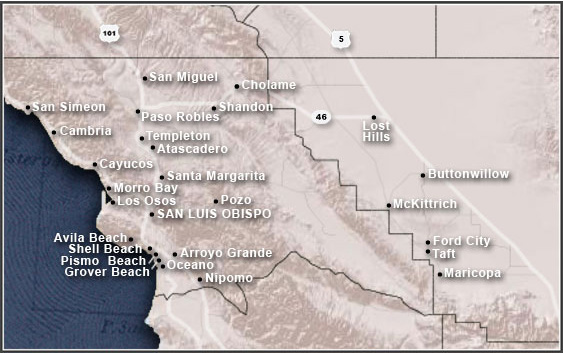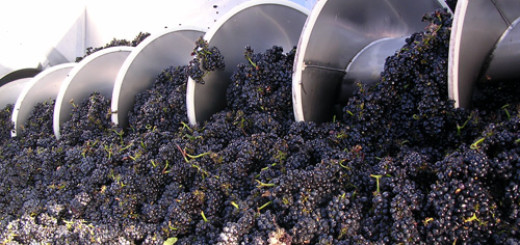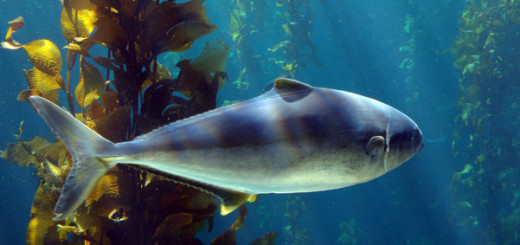Birdwatching in San Luis Obispo County
by Johanna Rubba, Ph.D.
What matches the thrill of seeing an unsusual bird for the first time? An occasional birder before moving to San Luis Obispo County in 1995, I approached birding fanaticism in my first years here. I still treasure those first sightings of the garishly-colored Black Oystercatcher; three species of cormorant—Brandt’s, Pelagic, and Double-crested—on one rock; and vagrant Magnolia, Grace’s, and Palm warblers. SLO County’s varied habitats and mild seasons make it a world-class birding destination. Hundreds of species reside here year-round or breed, winter, or migrate through here.
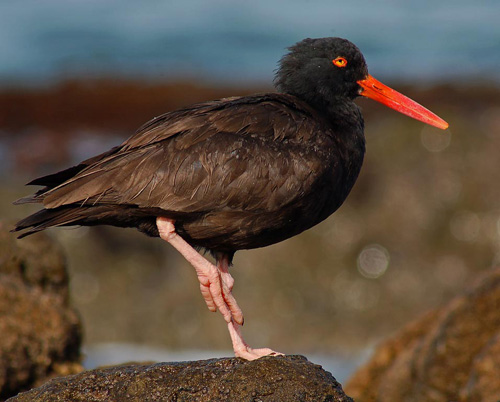
Black Oystercatcher
The Coast
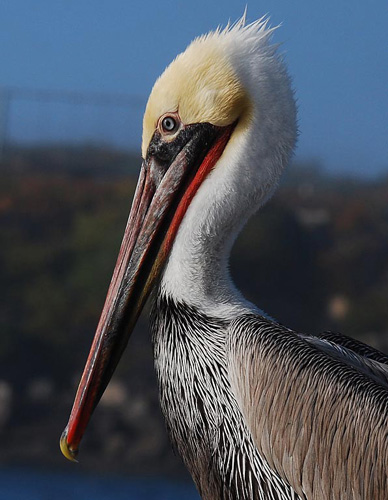
Brown Pelican
Coastal SLO County from Piedras Blancas to Oso Flaco hosts interesting species year-round: alongside Black Oystercatchers and cormorants, other birds include Brown Pelicans, various gulls (California, Heerman’s, Western, etc.), Pied-billed Grebes, and waders.
Migration periods bring stunning numbers. In autumn, clouds comprising tens of thousands of Sooty Shearwaters pass off the coast. Different terns, sandpipers, phalaropes, plovers, and waders visit lagoons and beaches in the hundreds. Snowy Plovers breed here.
In winter, Morro Bay Estuary and Oso Flaco host many ducks—teals, wigeons, shovelers, scaups, buffleheads—and the odd rarity, such as a harlequin or long-tail. Majestic White Pelicans roam between the coast and the reservoirs, and Osprey are seen regularly. I first saw White Pelicans performing their strange in-the-round feeding ritual in Morro Bay, and spotted my first Blue-winged Teal at Sweet Springs.
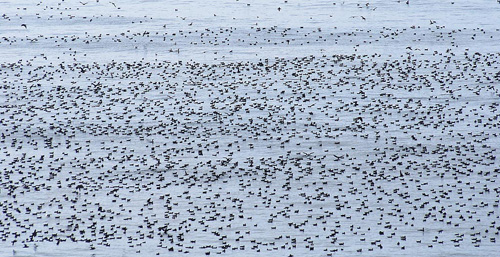
Sooty Shearwaters
Inland Grasslands and Hills
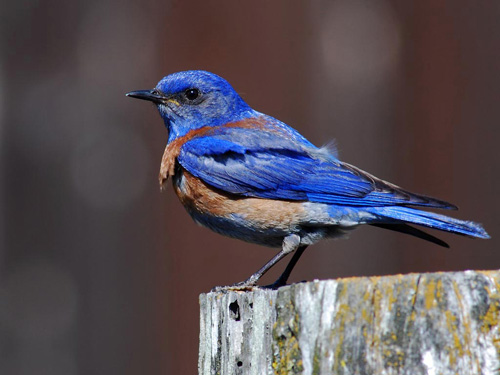
Western Bluebird
Inland, San Luis Obispo County offers square miles of open grassland and golden hillsides (in summer & autumn) and green hills (in the winter and spring) dotted by dark green oaks year round and drained by richly-vegetated creeks. Walking open grasslands from Hearst Castle to San Luis Obispo rewarded me with kestreling White-tailed Kites, neon-blue Western Bluebirds, Peregrine Falcons, and the Western Meadowlark’s crystalline song. Raptors, such as Kites, Kestrels, Loggerhead Shrikes, and Peregrine Falcons cruise above, while interesting sparrows—Grasshopper, Vesper’s, Rufous-crowned—huddle in the bush.
Riparian and Woodland Habitats
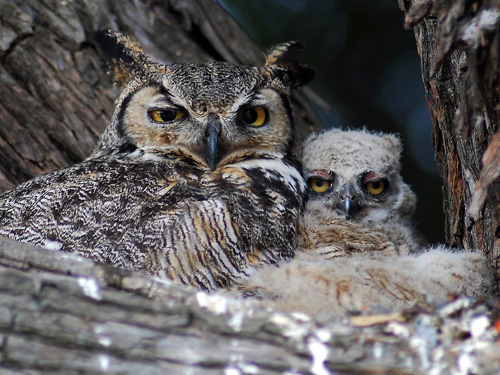
Great Horned Owl
Riparian and woodland habitats feature almost countless species: sparrows, such as White, Golden-crowned, and Song; Spotted and California Towhees; California Quail; Nuttall’s, Acorn, Hairy, Downy, and (if you’re lucky) Lewis’s Woodpeckers; Hutton’s and Warbling Vireos; Lesser, Lawrence’s, and American Goldfinches; Bewick’s, Marsh, and House Wrens; and Pacific-slope and Ash-throated Flycatchers. The “pee-weet” of the Pacific Slope Flycatcher still evokes for me hot, still summer days in Atascadero. A special sighting early in my time here in SLO County was of Lazuli Buntings in Tassajara Canyon. Chestnut-backed Chickadees, Oak Titmice, Bushtits, Wrentits, and Ruby-Crowned Kinglets are ubiquitous. Barn, Great Horned, and Western Screech Owls grace our nights, and Northern Pygmy, Spotted, and Short-Eared Owls have been seen. A striking memory: three Great Horned young—large, grey, and fluffy—near a spring in a town park near Laguna Lake on San Luis Obispo’s westside.
SLO County lies near to other birding areas including the Salinas Valley. The Yellow-billed Magpie lives in just one place in the world: the Salinas Valley, which runs along Highway 101 from Cuesta Ridge to Monterey.
Hummingbirds and Warblers
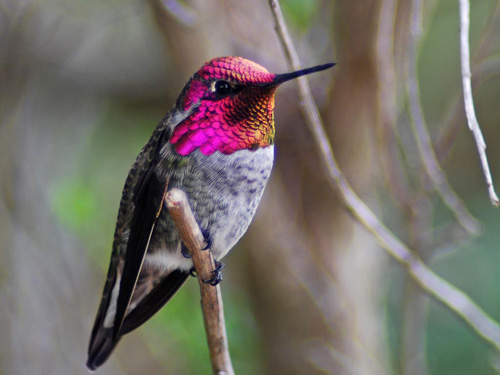
Anna’s Hummingbird
We can’t forget everyone’s favorites: warblers and hummingbirds. Resident Anna’s and breeding Allen’s hummingbirds are easily found, while Costa’s, Black-chinned, and Rufous are more-reclusive breeders. Anna’s vs. Allen’s dogfights over feeders provide summer entertainment along with the magical flare of males’ red and orange throats in the sunlight.
Warblers—colorful and perhaps melodious, whether resident or rare—provide an enduring challenge. Our regular resident and breeding birds range from the drab Orange-crowned Warbler through the Common Yellowthroat and Wilson’s to the delightful Yellow. Yellow-rumped Warblers winter locally in large numbers; Hermit and Townsend’s are regular fall migration visitors.
Spring and Fall migration bring the warbler-seekers out in numbers for both the regular migrants as well as the life-list dream rarities. Among my most memorable are a Northern Waterthrush seen at Spooner’s Cove in Montaña de Oro State Park, a Magnolia that I alone spotted on the Cal Poly campus, and an American Redstart at Oceano Campground. In fact, rarities aren’t so rare when we often host warbler visitors including the Tennessee, Palm, the stunning Black-and-white, and Blackpoll. A Chestnut-sided Warbler once spent the winter downtown at San Luis Obispo Creek!
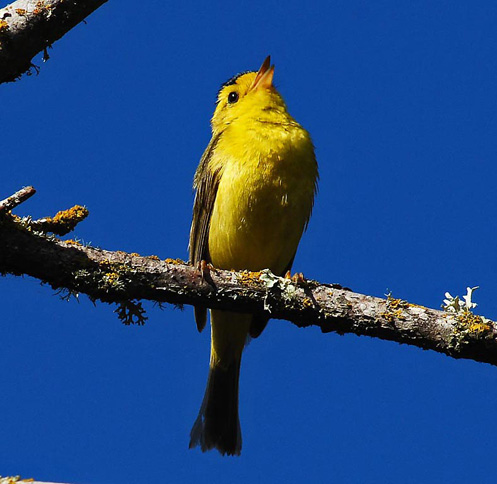
Wilson’s Warbler
Inland Waterways and Grasslands
SLO County’s reservoirs combine watery habitats with woodland/grassland ones. Bald Eagles, Grebes (Horned, Eared, Western, Clark’s), Bonaparte’s and Mew Gulls winter at San Antonio Lake. At Whale Rock, Santa Margarita Lake, and Lopez Lake, cormorants, winter ducks, Osprey, White Pelicans, and Belted Kingfishers populate the watery areas, while woodland and grassland birds animate the shores and trails.
As the largest remaining natural grassland in California, the Carrizo Plain is a special place: home to pronghorn antelope, Native American petroglyphs, and a clearly visible section of the San Andreas Fault. It is special for birders, too; many county species are found only here. In wet times, ducks and shorebirds (including White-faced Ibis) may be found here. Year-round and winter residents provide rich birding.
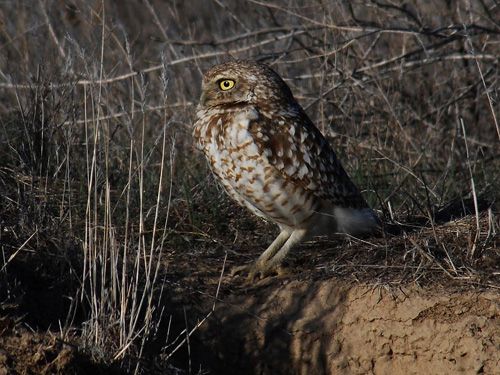
Burrowing Owl
My favorite is the Burrowing Owl: diminutive but long-legged, living in abandoned ground-squirrel burrows or tunnels in creek banks. Carrizo Plain is also a fine area for raptors, such as Merlin; Cooper’s, Rough-Legged, and Ferruginous Hawks; Prairie Falcons; and Golden Eagles. Also found here are LeConte’s Thrasher; Sage, Black-throated, Vesper and Savannah Sparrows; Horned Larks; American Pipits; Rock and Canyon Wrens; Phainopepla; and Short- and Long-Eared Owls. Winter may feature Mountain Plovers and, another favorite, Mountain Bluebirds, who sport neon blue from head to tail. In wet years, Sandhill Cranes stop at Soda Lake on their migration route. Always a remote possibility: California Condor.
Stay Tuned
Suppose you have only a day or two for birding in SLO County? Johanna will describe three places which combine habitats resulting in possible sightings of a varied and extensive list of species.
- Morro Bay/Los Osos
- Montaña de Oro
- Oso Flaco

